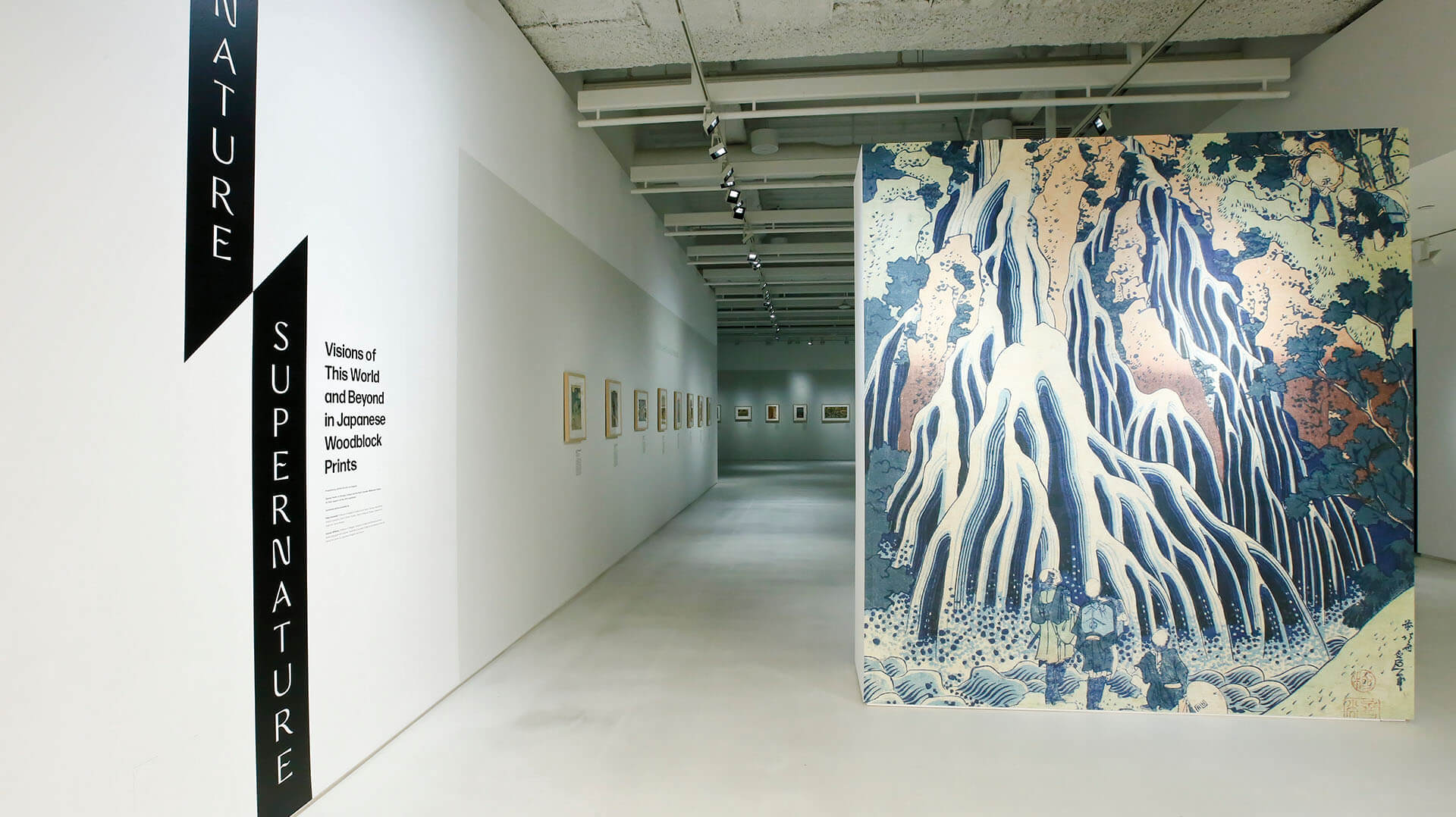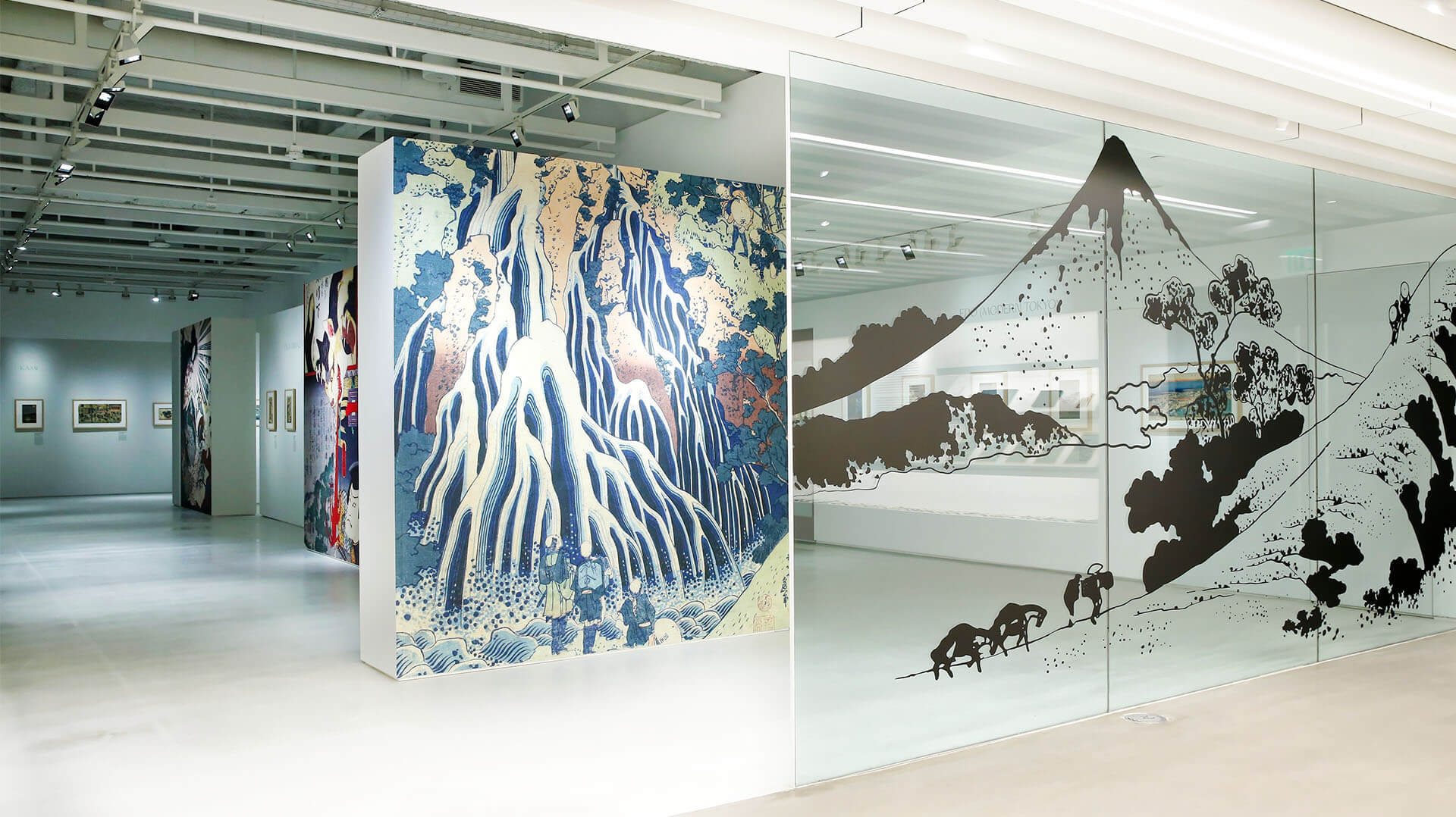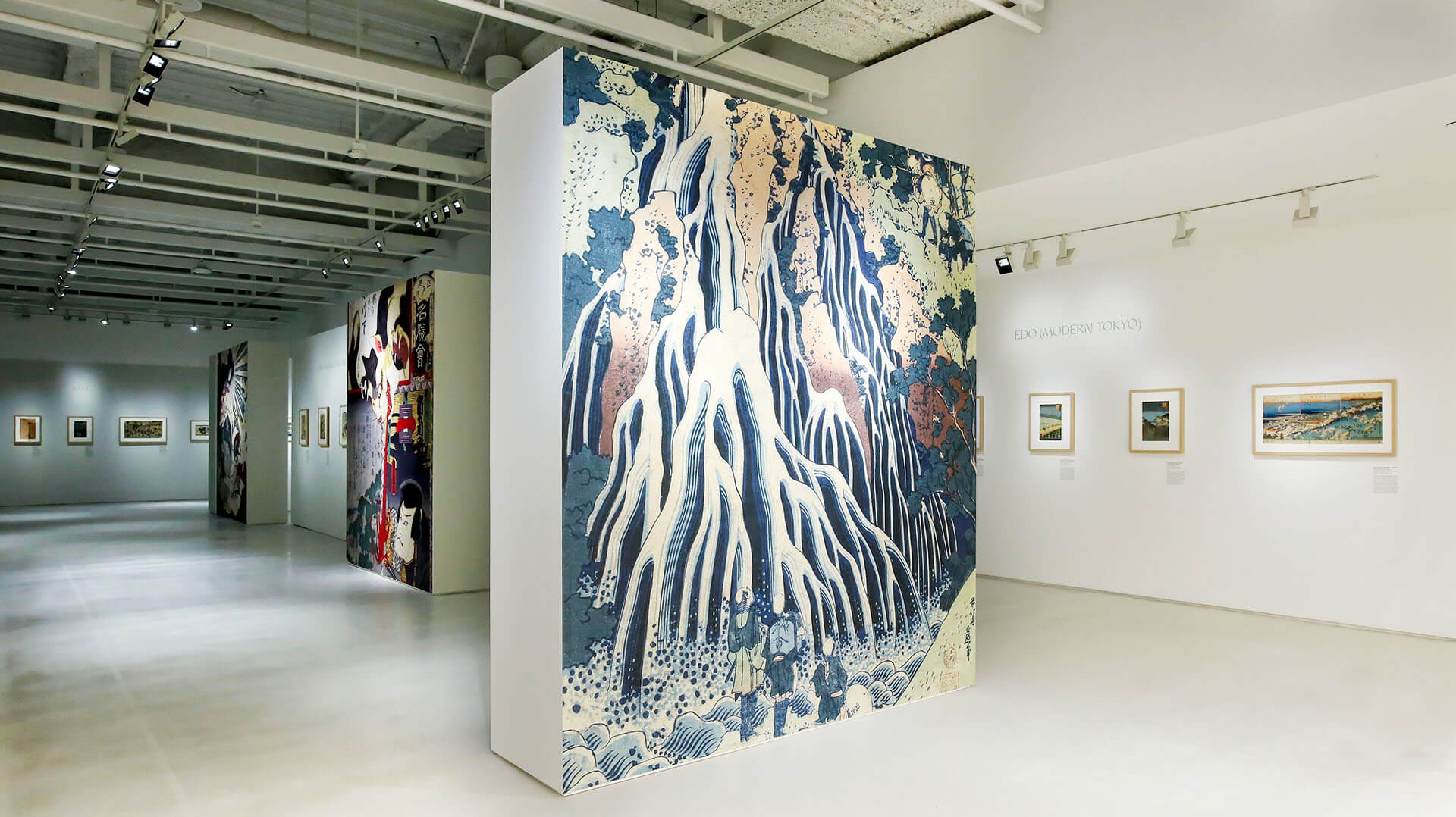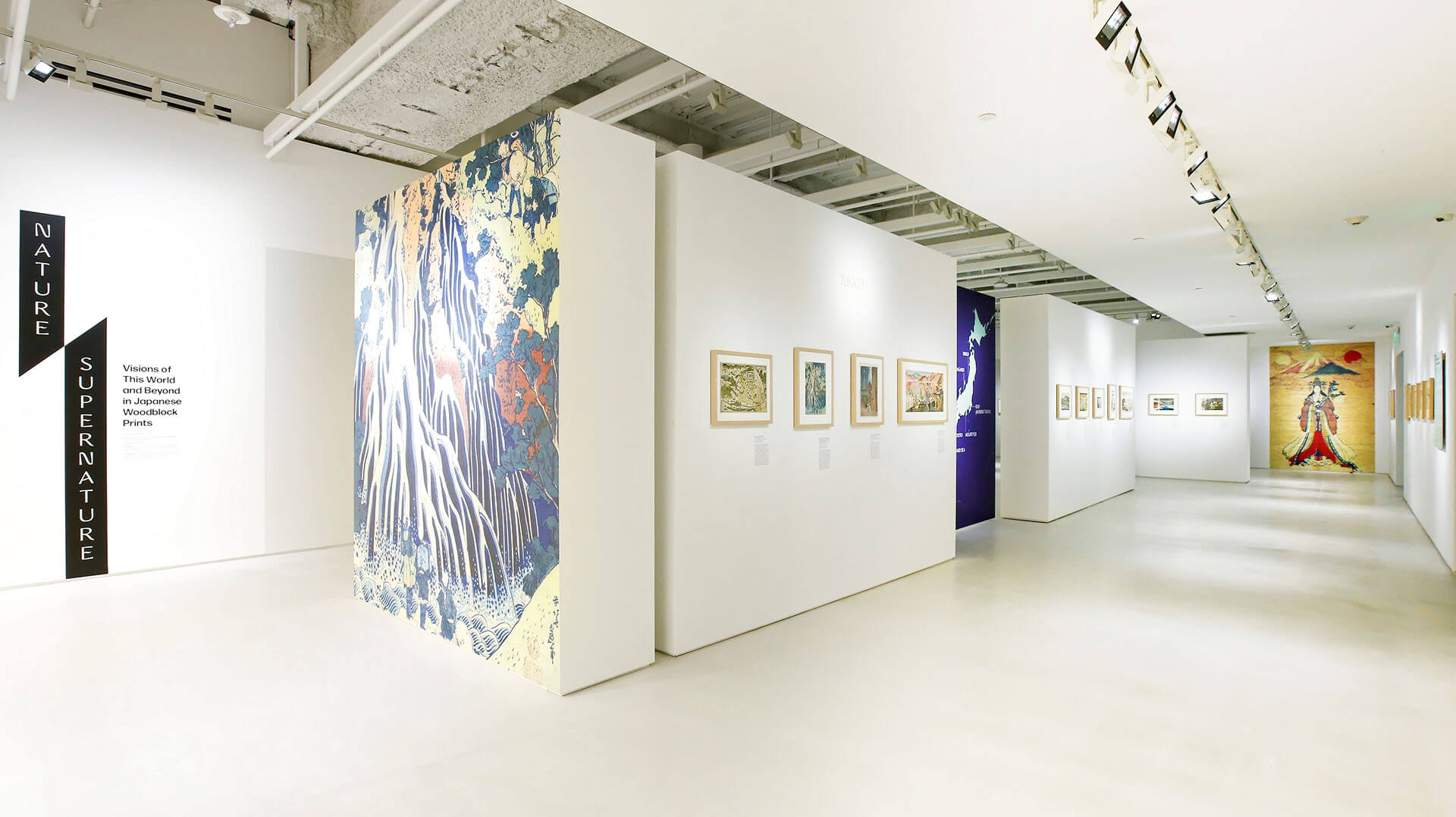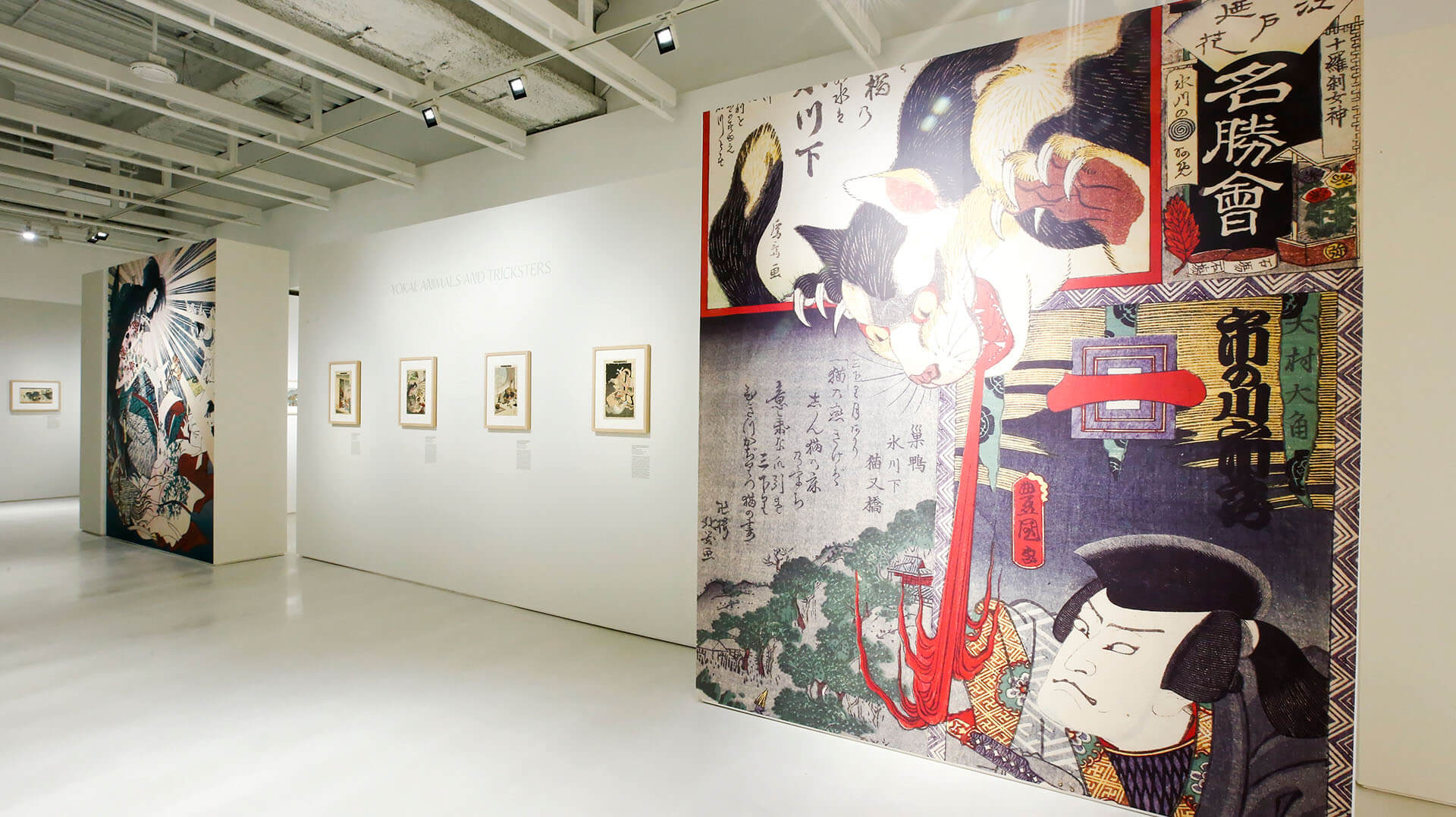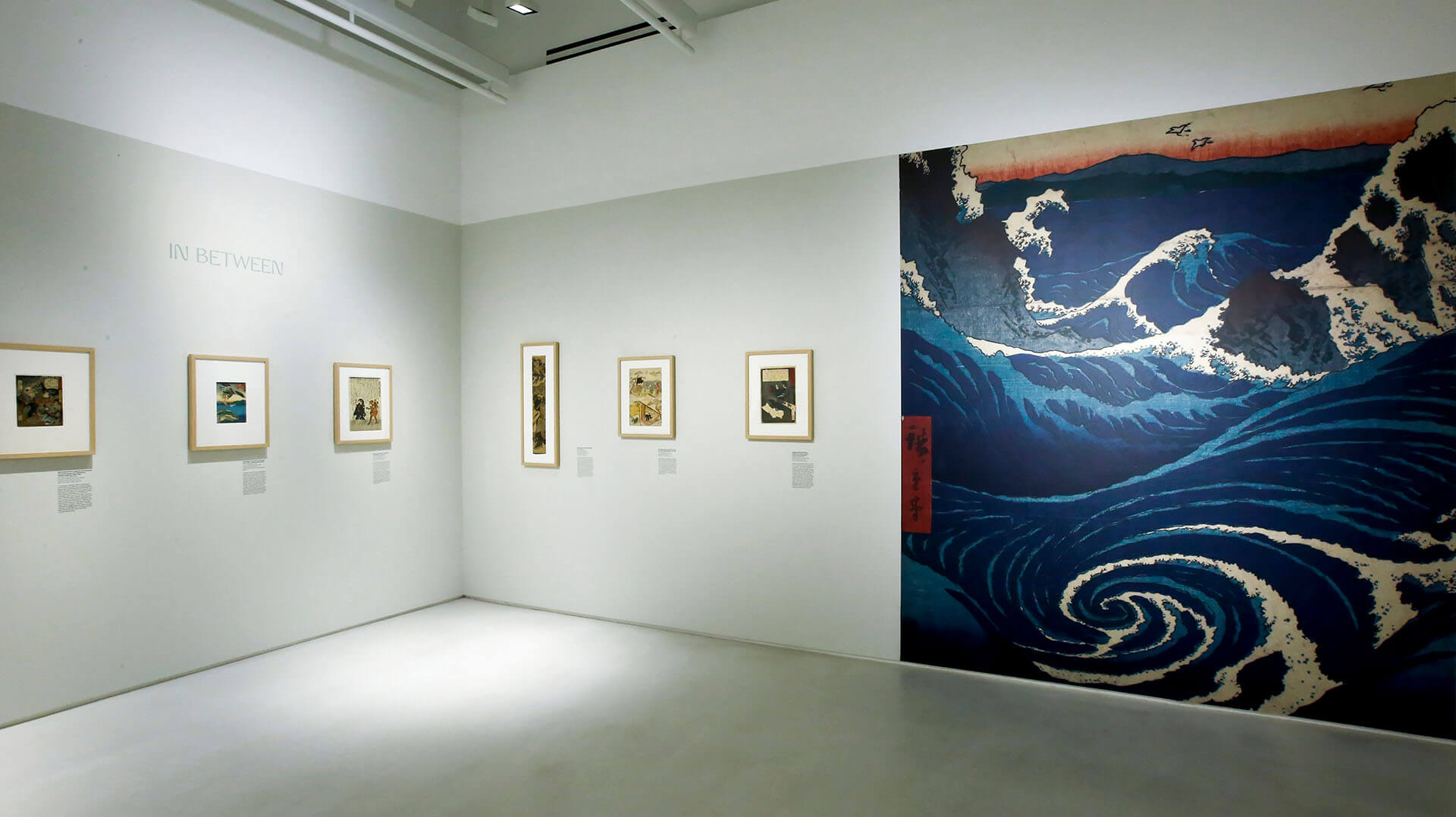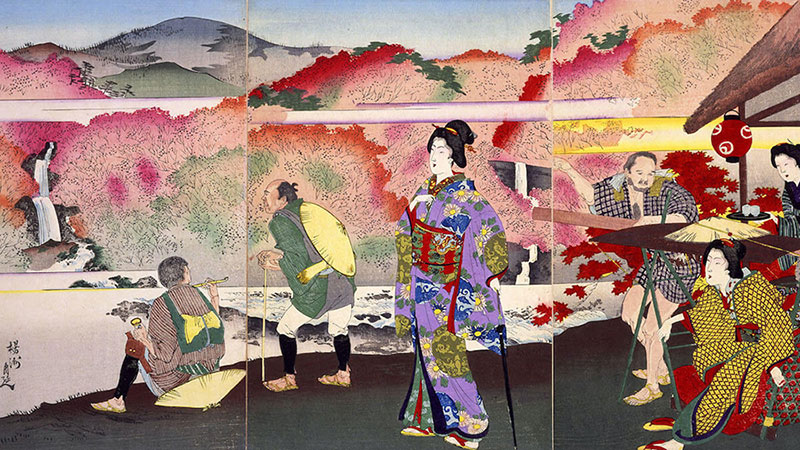
Famous Sights of Nikkō: Hannya and Hōtō Waterfalls by Yōshū Chikanobu, 1891
Of all the artistic innovations that Japan saw during the Edo period (1603-1868), perhaps none have had as lasting and wide-ranging an impact than ukiyo-e woodblock prints such as those currently showcased in the new exhibition “NATURE/SUPERNATURE”. Though Japanese Buddhist artists had been printing with woodblocks for centuries, it was during this period that woodblock printed texts and images entered the secular realm and underwent technical developments in response to new demand from a growing urban audience. Today, the influence of ukiyo-e prints can be seen across the globe, with Hokusai’s “The Great Wave off Kanagawa” becoming as recognizable an image as Da Vinci’s “Mona Lisa” and popping up on everything from billboards to tee shirts. Fitting for an art form that prized fresh perspectives, there’s still much to learn about the legacy and impact of Japanese woodblock printing – here are five new ways to look at ukiyo-e prints.
Fashion and Fandom
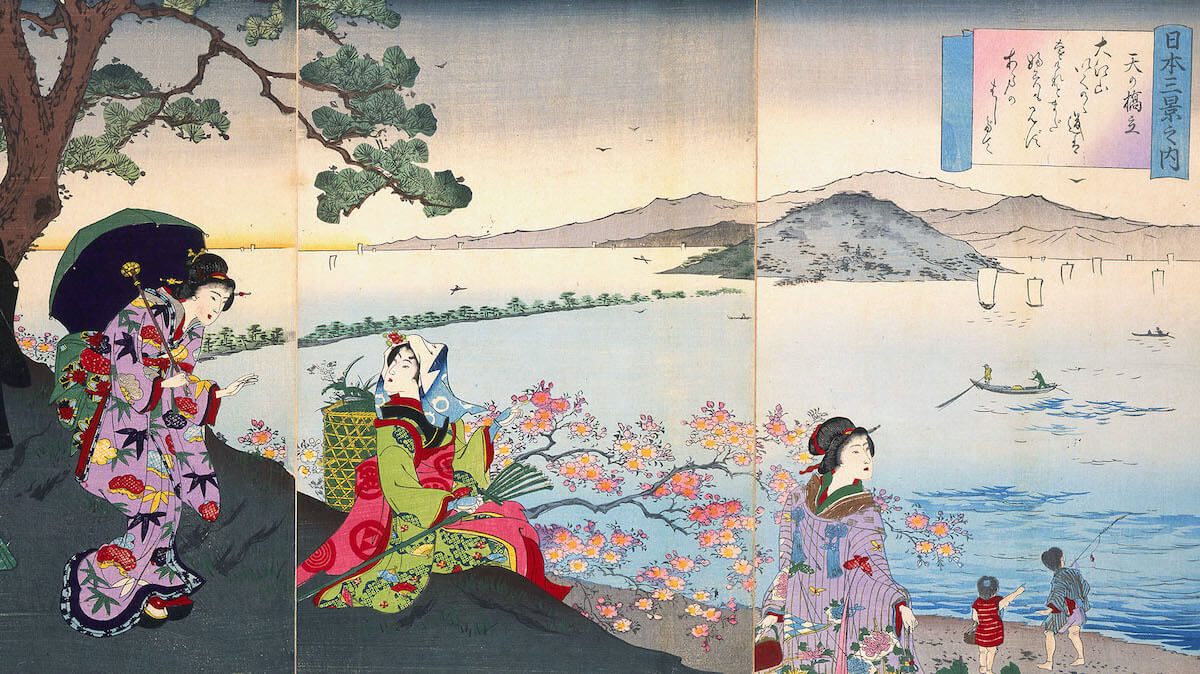
Amanohashidate by Yōshū Chikanobu, 1893
The word ukiyo literally means “floating world”, a term that refers to the nightlife quarters of Edo dedicated to kabuki theatre and entertainment, both bawdy and refined, which were often the subject of paintings, woodblock printed illustrated books and woodblock prints, all of which were known collectively as “ukiyo-e”, or “pictures of the floating world.” Thanks to developments in full-color printing, artists designed colorful prints depicting famous kabuki actors, courtesans, and scenes of nightlife, almost like celebrity magazines or tabloids of the day. In the 18th and 19th centuries, as more publishers commissioned these prints, and produced them in series of several hundred at a time, images of these popular figures became accessible to common people across the country who could vicariously enjoy the gossip and glamour of the urban demi-monde – for the price of a bowl of noodles! Of course, these celebrities also sported the latest trendy kimonos, geta, hair accessories, cosmetics and more, serving the function of the fashion magazine. Many of these prints featured subtle “advertisements” by textile designers and hair combs sported by the these well-known figures, so fans could purchase the same products used by their idols.
The Foundation of Manga and Anime
In the early 1950s when Osamu Tezuka was pioneering the forms of manga and anime, he often cited the influence of Walt Disney, but ukiyo-e was the unspoken tradition that made it all possible. The printing and wide circulation of inexpensive ukiyo-e printed books directly laid the groundwork for the manga industry in Japan, dating from a 1798 publication that was the first to use the term “manga,” meaning “whimsical pictures.” In 1814, the artist Hokusai began a hugely popular series of 15 volumes of printed books called Manga (written with characters meaning “Ten Thousand Sketches”), which didn’t tell stories, but contained assorted drawings of daily life, landscapes and the supernatural. The evolution of modern manga was informed by the practice in ukiyo-e of blending text and image, not to mention the use of dynamic perspective techniques and expressive figures to evoke dramatic narrative and motion.
The Roots of J-Horror
Around the turn of the millennium, Japanese horror films like Ringu (1998) and Ju-On: The Grudge (2002) took global cinema by storm, introducing Western audiences to some distinctive aspects and aesthetics of Japanese ghost story tradition. The ghostly woman in white, her face hidden by long black hair – this character of an onryō (vengeful spirit) dates back to ancient folklore, but the specific image was crystallized by 18th and 19th-century ukiyo-e artists who among other topics, explored the wild world of the supernatural. Ghosts, ghouls, demons, monsters, and shape-shifting spirits were popular subjects of the era’s kabuki theatre and novels and found their way into graphic representations of ukiyo-e, later inspiring similar visual style in J-horror cinema. To learn more about how woodblock artists drew on folktales to depict the terrifying yōkai (supernatural beings), don’t miss the accompanying exhibition-related program, “Yōkai Past and Present”.
Influence on Western Art & Architecture
With the start of the Meiji era (1868-1912), Japan opened up to the world and began exporting many of its treasures like porcelains, lacquer wares and other crafts to new consumers in the West. Ukiyo-e were displayed at the International Paris Exhibition in 1857, thrilling viewers, and by the late 1800s were in such demand in Europe that dealers could barely keep up. Among the early fans of ukiyo-e were artists like Vincent Van Gogh and Henri de Toulouse-Lautrec, who incorporated stylistic ideas – such as bold lines and flat areas of color – into their own work. Ukiyo-e became a key influence on Impressionism as well as on the development of Western modernist architecture and design – the latter largely due to American architect Frank Lloyd Wright who spent time in Japan during his design and construction of the Imperial Hotel in Tokyo and was a passionate collector of Japanese art, including woodblock prints. He claimed inspiration from the unique lines of perspective in woodblock prints on his own dramatic use of space in building design.
Views of Nature and the Dream of Travel
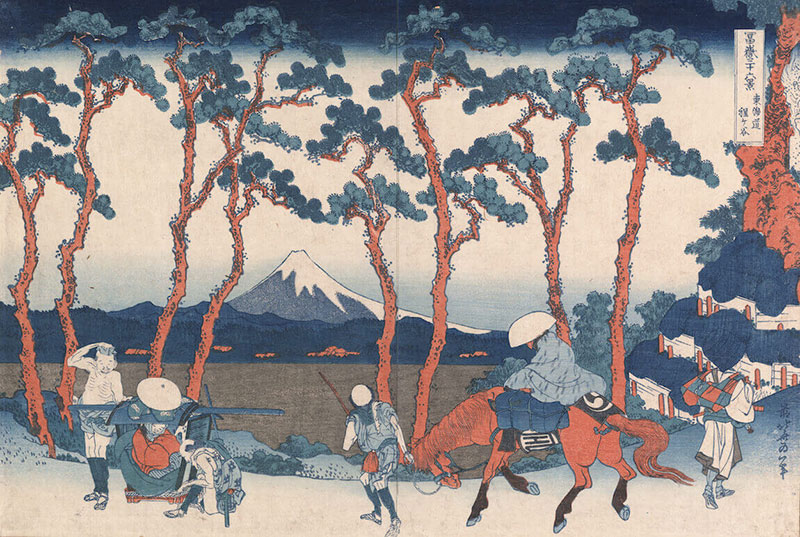
Hodogaya on the Tōkaidō Road from the series Thirty-Six Views of Mt. Fuji by Katsushika Hokusai, c. 1829
Continuing from other longstanding Japanese art traditions, nature became a prominent theme in ukiyo-e prints in the 19th century. Mountains, forests, fields, oceans abound; artists peer closely at the details of moonlight through cedar leaves, cherry blossoms in bloom, a snow-covered bridge. Woodblock prints were circulated as tourist images – the 19th century equivalent of travel magazines or scrolling through Instagram. For many common people who couldn’t afford to travel, they were a form of vicarious tourism, presenting famous sights, cities, and landmarks. But the prints balanced beauty and authenticity, with many artists seeking to capture the realities of nature and everyday life, like a tree bent by the wind or a lonely figure getting caught in a rainstorm. The sharp perspective paired with a heightened level of sensory detail that can still prompt visceral feelings – and a desire to travel - today.
Related Virtual Exhibition
NATURE/SUPERNATURE: Visions of This World and Beyond in Japanese Woodblock Print
- Date
02.15.2021 - 05.31.2021
- Location
Online
- Fee
Complimentary


